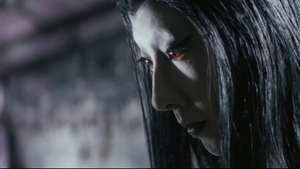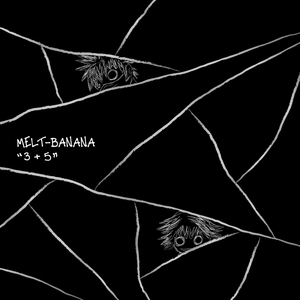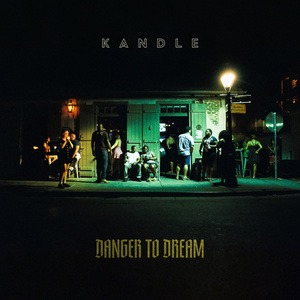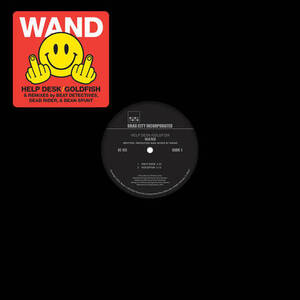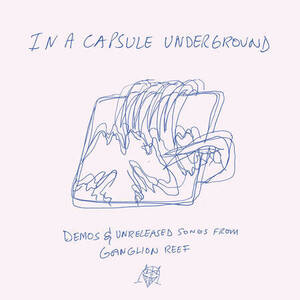
AFI Fest 2019
Los Angeles, California • November 14-21, 2019
by Generoso and Lily Fierro
This is our fifth time reviewing the eclectic programming of the American Film Institute’s Festival, the longest-running film festival in Los Angeles which year after year distinguishes itself as the city’s premiere showcase of new, vibrant global voices in cinema, while time and again providing a fitting stage to honor the filmmakers who have helped to define cinema’s legacy. This year, AFI Fest presented over 125 films that were combined with multiple galas, conversations, and this year’s special tributes, which were bestowed upon two legendary filmmakers: Martin Scorsese, who was in attendance for a conversation to present his newest feature, The Irishman, and Alan J. Pakula, the late, Oscar-winning director of All the President’s Men, whose legacy was celebrated with a documentary about his life and career and a programming section featuring three of his most iconic films.
There were also many changes to the programming and arrangement of this year’s AFI Fest, which included a dedicated section of documentary features and shorts, and the inaugural AFI Conservatory Showcase, a collection of twenty-one short fiction films curated from both world premieres and recent award winners. Also this time around, a Free Screenings section was established, as AFI Fest, for the first time since 2008, began charging for admission to screenings, but that section generously allowed the public the ability to see fifteen features without charge, including Noah Baumbach’s Marriage Story, Marco Bellocchio’s The Traitor, and the aforementioned The Irishman.
For our process in selecting the feature films that we watched and subsequently reviewed below, we considered a very similar set of criteria that we have used during our previous four years of covering AFI Fest. First, we feel that the main benefit of attending this particular festival is the ability to see films that may never receive proper distribution in the United States, and whether these feature films are located in the World Cinema, Documentary, New Auteurs, Cinema’s Legacy, or the now-defunct American Independents blocks, we have found that many of the ones we have championed in previous years at AFI Fest are still quite difficult to find in any format. Second, we always seek out new work from directors whose films we have appreciated previously, and although the New Auteurs category would suggest otherwise, we have indeed found features in that group from directors whom we have taken notice of in the past, as was the case this year with Anne at 13,000 Feet from Canadian director, Kazik Radwanski, whose impressive 2015 film, How Heavy This Hammer, made seeing his newest offering a must. In total, we saw sixteen features at AFI Fest 2019. We ranked these films in order of preference, beginning with our favorite, Ivana the Terrible (Ivana cea Groaznica) from Serbian director, Ivana Mladenović.
• •
Ivana the Terrible (Ivana cea Groaznica) / dir. Ivana Mladenović
In Ivana the Terrible, director, screenwriter, and actress Ivana Mladenović throws herself, her family, her friends, and her lovers into a semi-fictionalized account of the events of summer 2017. In real life, Mladenović—after seeing success from her debut film, Soldiers. Story From Ferentari, and from her role as the intriguing Solange in Radu Jude’s Scarred Hearts—experienced severe symptoms of stress and exhaustion, and in order to recuperate, she returned to her hometown of Kladovo in Serbia, and this return set the exposition for the film-version of Ivana, who has to try to heal up while becoming the central ambassador for the Serbian-Romanian Friendship Festival. Co-written with Adrian Schiop, who also co-wrote Soldiers. Story From Ferentari, Ivana the Terrible seamlessly blends fiction with emotions and memories from reality and features shining performances from Mladenović and her friend, the late Anca Pop. Claustrophobic, funny, and often uncomfortable, the film uses Ivana’s clashes and run-ins with everyone around her as the engine to study Kladovo, the relationship between Serbia and Romania, the desire to create and express through art, and the struggle to reconcile one’s identity upon leaving and returning to one’s home country. We had the opportunity to interview Ivana Mladenović at AFI Fest to discuss Ivana the Terrible. See here.
• •
The Whistlers (La Gomera) / dir. Corneliu Porumboiu
Corneliu Porumboiu’s well-documented, longtime fascination with language culminates in his latest film, The Whistlers. To expand on Cristi, the protagonist of 2010’s Police, Adjective, Porumboiu places his detective in a drug ring operating alongside a corrupted law system; however, Cristi is less occupied by the interpretation of the Romanian language these days. Now, he is learning Silbo Gomero, a language composed entirely of whistling in order to undetectably communicate with his drug ring partners. But, Silbo Gomero is only one of the many types of languages in The Whistlers. In order to form his discourse on methods of communication, Porumboiu weaves together film noir conventions, his own cinematic language, and music into the crime drama plot of The Whistlers to create an experience that toys with our notions of how image and sound can tell a story, evoke an emotion, and modulate our expectations and reactions. Unlike Porumboiu’s previous analytical works, The Whistlers is a complete spectacle where all elements of film have a role to play. The heist storyline in The Whistlers anchors the film, fulfilling that need for plots that we tend to have, but the sensorial experiences prompted by the scenes and the accompanying words and sounds are the most important part, for they require us to be more diligent in how we watch the film, and they take away the responsibility of interpretation from Cristi and place it on us, the audience. We had a chance to speak with Corneliu Porumboiu at AFI Fest 2019, and that interview will soon be published here on Ink 19.
• •
Varda By Agnès / dir. Agnès Varda
There is no better eulogy for Agnès Varda than the one she created for herself in Varda by Agnès. Using her signature, wonderfully fantastical, yet enlightening approach, Varda guides us through her films and her installations in order to show us the evolution of her beliefs in the purpose of the image over the course of her career. She explains her desire to capture the veracity of time in Cléo from 5 to 7. She explains her desire to use documentary to examine reality more intimately upon the emergence of the digital camera. She explains her desire to expand on the experience of seeing in her installations. Always the innovator, Varda’s work asks us to think about the many layers of vision and perception in our lives, and throughout the film, she shares with us the images, memories, and sentiments from hers. Few filmmakers are as loving, bold, kind, and humorous as Agnès Varda, and with Varda by Agnès, she humbly explains why all who love her work miss her so very much.
• •
Anne at 13,000 Feet / dir. Kazik Radwanski
Kazik Radwanski has an immense gift for creating intimate, claustrophobic portraits of characters who are more real than they are fiction. In his 2015 film, How Heavy This Hammer, Radwanski presented Erwin, a middle-aged man retreating from his responsibilities as a father and husband and spending too much time on endeavors such as video games and rugby. In his latest, Anne at 13,000 Feet, he introduces Anne (Deragh Campbell), a woman in her late twenties who precariously attempts to work in a daycare and maintain her relationships with her mom, her best friend Sarah, and her casual boyfriend Matt, all the while on the verge of a mental breakdown. Radwanski’s actors’ performances are so deeply rooted in reality that even if their characters’ situations are familiar conceits in film (man approaching mid-life crisis, woman wrangling mental instability), their expressions, mannerisms, and dialog are able to frighten us in their striking similarities to people we may know. To capture such a performance from Deragh Campbell (one of the most brilliant stars of this year’s AFI Fest) for her portrayal of Anne, Radwanski used the daycare his mother has worked at for decades, the same one he attended as a child, as the setting, and he and Campbell intensively worked on shaping Anne’s motivations and expressions throughout the two-year filmmaking process. In addition, Campbell worked volunteer shifts at the daycare, and as a result of this commitment to creating a complete character and setting, all of Anne’s behavior is impeccably consistent. As she teeters back and forth between being able to handle her life or not, we step into her reality. We shudder when she struggles with social interactions. We worry when she exhibits self-destructive behavior. And, we empathize with everyone around Anne who is doing the same.
• •
Bacurau / dirs. Juliano Dornelles and Kleber Mendonça Filho
To fully understand Juliano Dornelles and Kleber Mendonça Filho’s new feature, Bacurau, you must imagine, for a moment, a film that strives to be the inverse of Stephanie Spray and Pacho Velez’s acclaimed 2013 experimental ethnographic documentary, Manakamana. The setup: A young woman returns home to the village of Bacurau, a town in the Brazilian sertão, to attend the funeral of her grandmother Carmelita, who recently passed away at the age of 94. As the beloved matriarch of the town, Carmelita may have also possessed some level of occult powers, which is a facet that wonderfully checks off the exotic and the mystical requirements of Western filmmakers who desire to explore such a foreign place. Shortly after Carmelita’s funeral, residents begin to see their community disappear off the map, along with their cell phone coverage and electricity, just as a pack of predominantly American professional killers, strangely led by Michael (German actor, Udo Kier), are about to descend upon Bacurau to decimate the population with the help of state-of-the-art gadgets and copious amounts of gunfire. Having few options for survival, the inhabitants of Bacurau, led by their doctor, Domingas (Sônia Braga), and the hitman and vigilante, Pacote (Thomas Aquino), reach out to the wonderfully folksy heroic wildcard figure, Lunga (Silvero Pereira), who will, of course, use his Amazonian killing skills to unite the town to defeat their outsider enemies. Filho and Dornelles’ film not only succeeds by providing a clever and much needed pushback to proponents of culturally invasive ethnographic documentary, but also by twisting action genre tropes and exoticism clichés, which altogether form a feature that is equally enjoyable as a satire of outsiders’ expectations of Brazil’s representation in film and as a form of escapism to the contemporary population of a nation that has survived a history of violence and must now attempt to endure the government of Jair Bolsonaro.
• •
MS Slavic 7 / dirs. Sofia Bohdanowicz and Deragh Campbell
In the first seconds of MS Slavic 7, directors Sofia Bohdanowicz and Deragh Campbell present an open book with side-by-side Polish and English versions of, “To Józef Wittlin on the Day of His Arrival in Toronto – 1963,” a poem written by Bohdanowicz’s great-grandmother Zofia Bohdanowiczowa. From the tone, imagery, and Biblical allusions, the poem evokes an immediate feeling of sorrow, of missed opportunities, of histories filled with too many tragedies and disappointments to allow Bohdanowiczowa and Wittlin to be together, and as a result, we as the viewers are instantaneously curious about Bohdanowiczowa and Wittlin and prepare ourselves for an investigation of the lives that led to such a tremendously woeful poem. The film then immediately cuts to present day, to the image of Audrey (Deragh Campbell) entering a minimalist hotel room, quashing any expectation that we are going to see a literary adaption or some form of a biopic. Audrey is the great-granddaughter of Bohdanowiczowa, and she is on a self-guided research trip to Cambridge, Massachusetts in order to study the letters between her great-grandmother and the celebrated poet, Józef Wittlin. As the literary executor of the Bohdanowiczowa estate, Audrey wants to shine a light on her great-grandmother’s work, and the letters are her starting point, even if she’s not sure where they will take her. As MS Slavic 7 proceeds, Bohdanowicz and Campbell direct the film’s focus towards Audrey’s connections to Bohdanowiczowa’s writings and more broadly to her own heritage, family, and artistic inclinations. We get to see Audrey at an anniversary party at a Polish lodge. We get to be the listening partner to Audrey as she tries to digest the letters’ contents over a mug of beer. And throughout the film, the poem is omnipresent, maintaining Audrey’s curiosities (and ours) about Bohdanowiczowa and Wittlin that guide her research, reflection, and synthesis which open up her own path to self-discovery. With MS Slavic 7, Bohdanowicz and Campbell translate the roman à clef literary tradition to cinema, and the outcome is a wonderfully intimate yet occasionally abstract (in the best way) examination of the self through artistic research. We had a chance to speak with directors Sofia Bohdanowicz and Deragh Campbell, and that interview will soon be published here on Ink 19.
• •
Present.Perfect. / dir. Shengze Zhu
Live streaming represents an enormous percentage of China’s online media consumption, so much so that the anchors (i.e. hosts and creators) of the live streams can earn primary or supplementary income through gifts from the audience, transforming anchors into live entertainers and watchers into paying patrons and sometimes participants. It is this transformation of social roles and communication that fascinated Shengze Zhu, so she recorded hundreds of hours of Chinese live streaming footage and assembled her documentary, Present.Perfect. In the early sections of the film, we see anchors who primarily aim to entertain. From cranes moving to dancing to farming, anchors show their world or themselves using live streaming as the stage for all to see. Soon, the film transitions and focuses entirely on anchors who rely on live streaming as a way to connect with people. These anchors are isolated from society for a variety of reasons: one works many hours alone at a sewing station in a men’s underwear factory; one is severely burned and cannot return to work because of his injuries; one has a growth disability; one has deformed appendages; one is a singer and dancer who goes out into empty public spaces to try to entertain but often meets ridicule from his audience or from city officials. However, they stream their daily lives and regularly take questions from the audience and communicate directly to their watchers, and in doing so, have the ability to ascend past their isolation to connect with people outside of their realities. In seeing these anchors discuss their world with unseen conversational partners, we gain a deep understanding of the anchors and audiences’ emotional reliance on live streaming platforms, but we also feel the tension between the virtual and physical interactions and how technology can simultaneously enable virtual connectivity while increasing feelings of physical isolation. Present.Perfect. documents this pivotal moment in society where virtual relationships increasingly have more value than physical ones and how we, in our constant connectivity, are not that far from the anchors Zhu presents to us on the screen.
• •
Deerskin (Le daim) / dir. Quentin Dupieux
Director Quentin Dupieux began this decade with one of the strangest, genre-defying films that we have ever seen, Rubber, the film that raised the age-old question on whether or not car tires can have a heart and the desire to kill someone once in a while. In his new feature, Deerskin, the titular inanimate object in focus is a circa early-1970s buckskin/deerskin coat which our protagonist Georges (Jean Dujardin) willingly purchases for an exorbitant price of 7,000 Euros to wear with pride as he tries to regain his masculinity after being recently dumped by his wife, a woman who only exists in Deerskin as a voice heard during terse phone calls and as the empty aftereffects of a frozen shared bank account. As Georges descends on a sleepy resort town while wearing his deerskin jacket with “killer style” that fails to fully restore his ego, he begins to utilize a video camera that the deerskin jacket seller gave him as a throw in item to begin passing himself off as a film director to Denise (Adèle Haenel), a young bartender who longs to be a film editor. As this is a Quentin Dupieux film, Georges has no prurient interest in Denise, but he wants to use her skills and her money to make a film that allows for the power of his jacket to take full effect. With his plot before you, Dupieux likens Georges’ insane desires for jacket domination over the world to that now lost maverick 1970s filmmaker bravado that strives to finish a film no matter what the cost will be in money or lives. In order for Dupieux to pull off the comedic elements necessary for Deerskin to work, he needed Haenel and Dujardin to go all in, and thankfully, they give wonderfully manic performances that make this small, funny film thrive.
• •
Talking About Trees / dir. Suhaib Gasmelbari
“What kind of times are these, when to talk about trees is almost a crime, because it implies silence about so many horrors?” It is this quote from a poem by Bertolt Brecht which Sudanese director Manar Al Hilo utters during a moment in Suhaib Gasmelbari’s documentary, Talking About Trees, that not only declares the film’s title, but also its core sentiment about the cost of the suppression of artistic endeavors. During the military coup in 1989, the film industry that proudly existed in Sudan for decades came to all but a crashing halt once Sharia law was instituted. Now in present day, we watch Sudanese filmmaker contemporaries Ibrahim Shadad, Suleiman Mohamed Ibrahim, Altayeb Mahdi, and Manar Al Hilo, The Sudanese Film Group, travel through the countryside in a failing VW microbus armed solely with a small screen and an underpowered film projector to host free public screenings of classic films like Charlie Chaplin’s Modern Times to willing audiences. As we follow our valiant programmers from town to town, only some of their personal backstories unfold onscreen (with one backstory including prison time for suspected Communism and another including film school abroad) along with snippets of their previous work in cinema, and thus we start to better understand the passions and commitment they put forth as they attempt to restore an abandoned outdoor cinema venue to present a screening of Quentin Tarantino’s 2013 feature, Django Unchained, a feature that suits the surrounding community’s request to see more action films from the West in a communal setting. As we helplessly watch the Sudanese Film Group’s best efforts to put on a single screening run into wall after wall of government pushback, we gain an appreciation of how media repression efforts in Sudan turn the simple pleasure of publicly viewing cinema in a community into an impossible endeavor. In the end, Talking About Trees fails to give deep insights into all four of the filmmakers’ lives prior to their noble efforts to bring film screenings back to their homeland, and we also shuttered a bit when too many seemingly staged moments were interspersed into the documentary. Despite these shortcomings, the core message is what really is at stake in Talking About Trees, and Gasmelbari does deliver it clearly.
• •
The Traitor (Il Traditore) / dir. Marco Bellocchio
Even as he approaches the end of his sixth decade as a filmmaker, Marco Bellocchio continues to add his own voice to some of the most significant moments and figures in Italian history. Bellocchio’s exceptional 2009 feature To Win (Vincere) examined the life of Ida Dalser, Benito Mussolini’s first wife, and offered unique insights into the fascist leader’s early career, and with Bellocchio’s 2012 film, Dormant Beauty (Bella addormentata), the director focused on the controversial case of Eluana Englaro, the young victim of an automobile accident whose injuries left her in a long-term, unrecoverable comatose state that lead to her family making the decision to euthanize her and consequently having to battle against the Catholic Church and the Italian government as they campaigned against the decision. In his new feature, The Traitor, Bellocchio revisits the highly publicized Maxi trials of the 1980s, an unprecedented event when hundreds of key figures in organized crime were tried and convicted, much to the dismay and, at times, contempt of the Italian people. The film centers on the key figure of the prosecution’s case against the higher bosses, the titular “traitor,” Tommaso Buscetta (Pierfrancesco Favino), a high ranking member of the mob. While supervising drug trafficking efforts in South America for his crime family back home, Buscetta is captured by the Brazilian government and handed over to the Italian authorities. As a reluctant and even suicidal witness tortured by the Brazilian police, Buscetta begrudgingly enters into a leniency deal with prosecutor Giovanni Falcone (Fausto Russo Alesi), whom he develops a bond with during their multiple sessions where our former crime boss verbally unravels the organization that he now feels has lost its initial mission of serving the Italian people. Bellocchio masterfully handles the tone of the trials, trials that exhibit moments vacillating between farce and drama, and Favino delivers an exceptional, varied performance as the embattled Buscetta, who tries his best to calmly face the wide-ranging revulsion that is hurled at him and his family, but where The Traitor somewhat unravels is in the murkiness of Buscetta’s motivations to provide even more evidence for the prosecution as the film progresses past its midway point. One failing can be observed during the multiple scenes where Buscetta nearly appears enamored of his time spent with prosecutor Falcone, but their earlier scenes together during discovery seem protracted and rarely reach the level of engagement necessary to warrant the catharsis that would be crucial for Buscetta to further bury all of his former cohorts to honor Falcone’s legacy. By the time we reach the final third of The Traitor, we as the audience are unclear as to what Bellocchio wants us to think of our protagonist who lives out his remaining days in witness relocation whilst traveling back and forth to Italy to offer more testimony. Though The Traitor clocks in at almost two and a half hours, at the end, you are still left with a feeling that much of this film has been edited out of the final cut to reduce its scale, leaving an aftermath of too many disconnected scenes that fail to build dramatic tension. Although The Traitor begins strongly, it ultimately becomes a missed opportunity by Bellocchio to present a more compelling and lasting portrait of Tommaso Buscetta.
• •
The Science of Fictions (Hiruk-pikuk si al-kisah) / dir. Yosep Anggi Noen
Conspiracy theories have existed and always will exist when looking at current and historical events, for the subjectivity of first, second, and third person accounts will always inspire some level of curiosity and suspicion. One of the most popular conspiracy theories in modern history is the belief that the moon landing never happened and that the scenes from the moon shown across American televisions were in fact scenes constructed on a soundstage. In his film, The Science of Fictions, director Yosep Anggi Noen expands on this moon landing conspiracy, beginning his film with the images of a fake moon landing and a narration explaining that rock formations in Indonesia were believed to be close to those of the moon. Siman, our protagonist, accidentally stumbles upon the fake moon landing, and in order to prevent him from telling others, the generals guarding the set cut off his tongue. Siman only has one way to tell of his encounter with the moon landing—to act as if he was still on the moon, and over the course of The Science of Fictions, we see how people find Siman as a source of entertainment without ever trying to figure out why exactly he is stuck on the moon. Siman’s actions and changing role in his community are compelling, but the various reactions to his space entrapment and the interspersed scenes of an Indonesian general’s fall from grace, become too overbearing and heavy-handed in their constant reminder that reality and images presented to us by any media form are often manipulated to suit someone’s needs, be it a political body’s or our own selfish ones to be entertained. We understand that the manipulation of truth in media is an important subject, but the deliberateness of The Science of Fictions doesn’t make us think more deeply about the problem and how to try to address it—such handling only reminds us that the problem is there.
• •
Patrick (De Patrick) / dir. Tim Mielantis
Patrick is a quiet man in his late thirties who lives on a nudist campground run by his father. Surrounded by naked bodies, he mostly keeps to himself and spends his days in his immaculately organized workshop creating sharp, modern handcrafted furniture. His normal slow-paced days, however, quickly change when the loss of one of his hammers and the death of his father set into motion a string of events that forces Patrick to take on more responsibilities than he’s ever handled before. For his debut feature, Tim Mielantis starts with a mildly interesting character, but unfortunately, over the course of Patrick, he tosses him in many directions but never anywhere meaningful. Underneath the neurotic investigation for the missing hammer, the planning of a coup to take the campsite away from Patrick, and some outbursts of violence, Patrick is a coming-of-age tale of a man reaching adulthood a bit too late, and in lieu of embracing the awkwardness of this situation, especially in a nudist camp surrounded primarily by people who are in at least one or two generations before Patrick’s, the film uses plenty of crime and mystery plot contrivances and incomplete character development moments to try to guide Patrick toward his awakening. Mielantis spent a lot of his time creating the setting and context for Patrick, and indeed, there are some commendable points in both, but the plot of the film and the trajectory of Patrick feel disjointed and hollow. We’ll always take a less precisely constructed chair for a richer character.
• •
Desert One / dir. Barbara Kopple
In Desert One, two-time Oscar-winning documentarian, Barbara Kopple (Harlan County USA, American Dream) assembles interviews with a dazzling contingency of the major players who were involved in Operation Eagle Claw, the catastrophic April 24, 1980 mission to free the American hostages held by militant students in Iran. Led by Vietnam veteran and Delta Force commander, Col. Charles A. Beckwith, Operation Eagle Claw resulted in the accidental deaths of eight servicemen at a midway point outside of Tehran. Speaking with everyone from former President Jimmy Carter and Vice President Walter Mondale to members of the Delta Force, and even the captors and hostages themselves, Kopple paints a clear picture of the multitude of challenges faced by not only the brave soldiers who risked everything to rescue our citizens held abroad, but also the domestic pressure faced by the Carter administration to act as the hostage crisis went from weeks to months during an election year. As Kopple’s analysis of the mission and the toll of its failure are brought into focus by those involved, one cannot avoid noticing the shift that occurred during that time, a time when we as a nation demanded a less pensive leader who searched, possibly in vain, for a peaceful outcome, and more of a leader who would rise to action without weighing all of the potential costs. In this facet, Desert One is quite effective, but perhaps in pursuit of this metaphoric goal, Kopple does miss an opportunity to fully examine the crucial mistakes of Operation Eagle Claw, organizational mistakes that Col. Charlie Beckwith openly discussed during hearings with the Senate Armed Services Committee. Also, given Kopple’s unprecedented access to President Carter, where is the discussion of the issues of mistrust that were briefly raised in the film during the President’s negotiations with Iran after the mission’s catastrophe? Or, even some sort of investigation into the decades-old rumor about Reagan’s team stalling the release of the hostages until after his inauguration? Almost forty years after Operation Eagle Claw, we are glad that there is finally a film that honors the gallant soldiers who died in the desert of Iran, but perhaps we could’ve learned so much more if a selection of deeper questions had been raised about the flaws inherent in the philosophy behind the mission’s organization.
• •
Family Members (Los miembros de la familia) / dir. Mateo Bandesky
Lucas and Gilda return home to an unnamed seaside Argentinian resort town in the wintertime to bring their mother’s body to nearby the ocean, per her final wish. Unfortunately, the brother and sister aren’t allowed to take the full body, and this misfortune sets the tone for the rest of their time in the town. Soon after partially fulfilling their mother’s wish, the bus drivers go on strike, and the two are stranded for an unknown period of time in their former hometown. Lucas and Gilda, who have spent much of their recent lives away from each other, suddenly have to live together again and realize how different they are. Lucas cares about the physiological, and Gilda cares about the mystical, but as they work through their unresolved feelings about their mother and their faith and try to figure out how to return to their lives in Buenos Aires, the brother and sister come to accept each other and themselves as they process their grief. Though Mateo Bandesky’s Family Members is neither novel nor outstanding in its concept and execution, the film contains solid performances from Tomás Wicz as Lucas and Laila Maltz as Gilda. Family Members is a pleasant watch, but its overly subdued approach, lack of risk in its developing its characters, and re-treading of familiar emotional territories surrounding grief leave little room for any profound fascination.
• •
Forman vs. Forman / dirs. Jakub Hejna and Helena Trestíková
In terms of worldwide acclaim, no other director of the Czech New Wave of the 1960s emerged more prominently than the late Miloš Forman. In Forman vs. Forman, directors Jakub Hejna and Helena Trestíková trace Forman’s life from his beginnings as the child of parents who were murdered by the Nazis through his education at a boarding school with future Czech president, Václav Havel, to his work in America where he was best known to American audiences by his box-office and critical successes, One Flew Over the Cuckoo’s Nest, Amadeus, and The People vs. Larry Flynt. By utilizing rare archival footage, we watch Forman’s growth as a distinct voice of a group of filmmakers that included the brilliant talents of Věra Chytilová and Ivan Passer. Directors Hejna and Trestíková rely mostly on the director’s own words and the aforementioned footage to construct a view of Forman, including rarely seen intimate moments such as Forman’s languishing in the Chelsea hotel in New York after the failure of his American feature film debut, Taking Off, and how that period led to his adaptation of Ken Kesey’s book, One Flew Over the Cuckoo’s Nest. Unfortunately, Forman vs. Forman ends abruptly without any final thoughts and just his filmography scrolling across the screen, suggesting that perhaps the filmmakers ran out of the necessary archival footage to complete their thesis. As the title suggests, if Hejna and Trestíková intended to create a portrait of a creative mind in turmoil with itself, then Forman vs. Forman only begins to hint at how the creator’s conflicts and decisions may have interfered with his growth as an artist, so, as the film stands, we are only left with a limited portrait that feels too thin and unsatisfying.
• •
Beanpole (Dylda) / dir. Kantemir Balagov
The initial framework of Beanpole was all too intriguing. Set in Leningrad during the autumn following World War II, two close female friends who served as soldiers during the conflict are reunited to deal with the aftermath of the war and its toll on their personal lives. One of the women, Iya (Viktoria Miroshnichenko), a tall, good-natured looking soul known by everyone as Beanpole (in Russian slang, “beanpole” can also imply that one is clumsy), works as a nurse in a hospital where she tends to other combat veterans. Iya has been discharged from the service herself after suffering from a head injury during fighting that now causes her crippling paralysis spells, but still, she curiously is the primary caretaker of Masha’s infant son, Pashka (Timofey Glazkov), and pretends to be his mother to her neighbors and colleagues. During one evening at home, Iya succumbs to a spell that results in the accidental suffocation of Pashka, which Iya presents to her recently returned friend Masha (Vasilisa Perelygina) as an unexpected death in his sleep. Masha takes this news of her son’s death without a pause and unemotionally begins her quest to become a mother again, but when she realizes that she is not able to conceive due to injuries that she too has sustained during the war, Masha charges her guilt-ridden friend with the task of becoming a surrogate mother for her new child. What should then become an in-depth emotional portrait of two lives trying to rebuild their identities after war is clumsily handled by director Balagov, who among other multiple glaring errors in execution, incorporates an overbearing and borderline ridiculous red and green color palate as an allegory for the veracity and falsity of the characters’ inner motivations. This amateurish use of symbolic color, combined with exceedingly facile dialog, and an overuse of enigmatic expressions on the faces of both Perelygina and Miroshnichenko throughout the film unnecessarily convolute our main characters’ intentions for the purpose of creating some level of unpredictability in the narrative, which regrettably quashes any empathy that the audience might develop for these soldiers’ predicaments. Director Balagov consistently puts style above character in Beanpole, which is inexcusable given the meager amount of films that have been produced about female combat veterans.
◼
All films were screened at AFI Fest 2019 presented by Audi. Many thanks to AFI for another outstanding year of cinema and conversations, and a special thanks to Johanna Calderón-Dakin, Senior Publicity Associate for AFI Fest, who made our festival coverage possible.
• •
Feature photo courtesy of AFI Fest: Ivana the Terrible Q&A with editor Catalin Cristutiu and director Ivana Mladenović.





